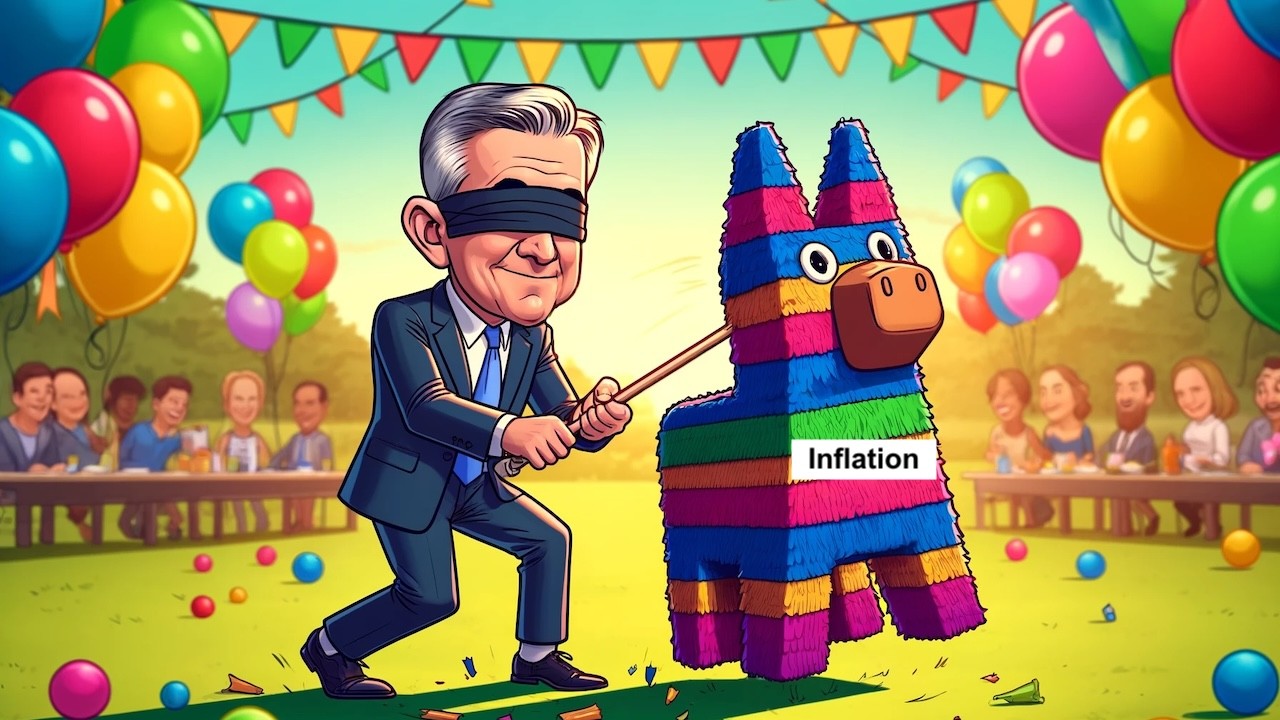(Mike Maharrey, Money Metals News Service) Federal Reserve Chairman Jerome Powell and his fellow central bankers are swinging at inflation like a blindfolded kid trying to break a piñata.
Do you remember the March FOMC meeting? The Fed released its projections for rate cuts in the coming months. The consensus was for three cuts this year.
Fast forward six weeks. That’s all off the table.
Not a year. Not half a year. Six weeks.
Now ask yourself this question: did the underlying economic fundamentals really shift significantly in just six weeks?
Sure, we got some data that revealed price inflation seems to be heating up. But if you put that data into the context of the massive amount of inflation the central bank created since 2008, it shouldn’t be surprising. Nothing has fundamentally changed from a macroeconomic perspective. The problem is the central bank hasn’t done enough to slay the inflation dragon that it released.
That hasn’t changed in six weeks.
Meanwhile, Powell & Company are flip-flopping all over the place, running their mouths, swinging a stick, and mostly missing the target.
Interest Rates Will Stay Put
As expected, the FOMC held rates steady between 5.25 and 5.5 percent. In its official statement, the Committee conceded that rates will remain at this level into the foreseeable future.
“The Committee does not expect it will be appropriate to reduce the target range until it has gained greater confidence that inflation is moving sustainably toward 2 percent.”
During the post-meeting press conference, Powell admitted that he and his fellow central bankers don’t have a clue when that might happen.
“I would say my personal forecast is that we will begin to see further progress on inflation this year. I don’t know that it will be enough, sufficient. I don’t know that it won’t. We’re going to have to let the data lead us on that.”
It’s ironic to contrast how emphatic Powell was when insisting that inflation was “transitory” and how wishy-washy he is now.
Powell said the decision as to when to ease monetary policy is “a judgment call.”
“There isn’t any rule. You can’t look to a rule.”
Or to put it another way, Powell & Company is running monetary policy on hunches and guesses.
When asked whether unemployment ticking above 4 percent would be enough to trigger a cut, the Fed chair also refused to provide any concrete guidance.
“An unexpected weakening is the way I characterized it. I’m not going to try to define exactly what I mean by that, but it would have to be meaningful, and get our attention, and lead us to think that the labor market was really significantly weakening for us to want to react to it.”
While Powell didn’t give any hints about the timing of rate cuts, he did indicate that further rate hikes aren’t currently on the table, but he didn’t rule them out.
“I think it’s unlikely that the next policy rate move will be a hike. I would say it’s unlikely.”
Powell insisted that monetary policy is “sufficiently restrictive.” I should note here that monetary policy remains loose from a historical perspective.
Balance Sheet Reduction to Slow
While the FOMC didn’t make any changes to interest rates, it did announce plans to slow balance sheet reduction. According to the official statement, the Fed will ratchet down the reduction of its Treasury holdings by more than half, from a maximum of $60 billion to $25 billion per month beginning in June. It will continue to reduce its holdings of mortgage-backed securities by $35 billion per month.
The plan to slow the balance sheet run-off is completely at odds with the Fed’s insistence that it is committed to pushing price inflation back to its 2 percent target.
The Federal Reserve added nearly $5 trillion to its balance sheet during the pandemic and injected the same amount of money into the economy. This is, by definition, inflation. This monetary inflation is the root of the price inflation we’re suffering from today. Since the central bank launched its inflation fight, it has only wrung $1.5 trillion of that inflation out of the economy. This is just a drop in the inflationary bucket.
The balance sheet reduction scheme was tepid, to begin with. Based on the plan announced in March 2022, it would take 7.8 years for the Fed to shrink its balance sheet back to pre-pandemic levels. That doesn’t even begin to touch the trillions added to the balance sheet in the decade after the 2008 financial crisis.
And now their winding balance sheet reduction down.
It’s no secret why.
The U.S. government has a borrowing problem. It is issuing Treasuries at breakneck speed to cover the massive monthly budget deficits. When the Fed allows bonds to roll off its balance sheet, the Treasury Department must find buyers in the open market to replace them. (The government has to borrow money to pay the bondholders who lent them money in the past.) In effect, balance sheet reduction increases the supply of Treasuries in the marketplace, causing prices to fall and yields (interest rates) to rise. With the U.S. government paying more on interest expense than every spending category except Social Security, the Fed simply can’t maintain balance sheet reduction.
In a nutshell, it is backing off balance sheet reduction to enable U.S. government borrowing and spending.
But this move is completely at odds with the inflation fight and reveals that the Fed isn’t quite as concerned about beating price inflation as the rhetoric might indicate.
When you look at what Powell & Company say and do, it becomes clear that these central bankers don’t know what they’re doing. It’s a monetary policy based on conjecture, wild guesses, and hope.
Mike Maharrey is a journalist and market analyst for MoneyMetals.com with over a decade of experience in precious metals. He holds a BS in accounting from the University of Kentucky and a BA in journalism from the University of South Florida.

